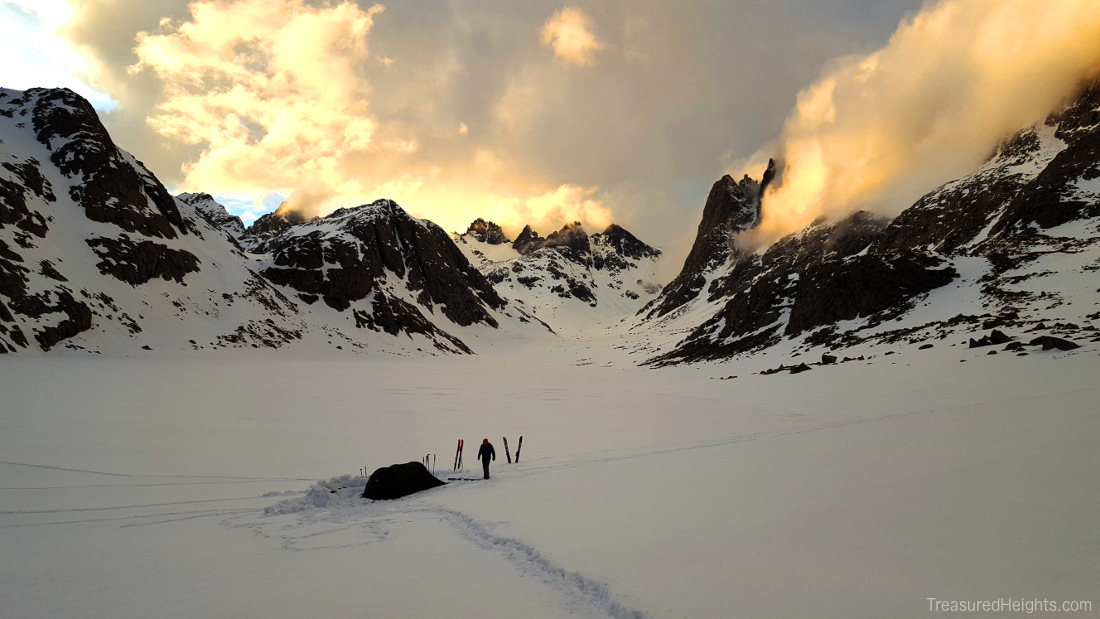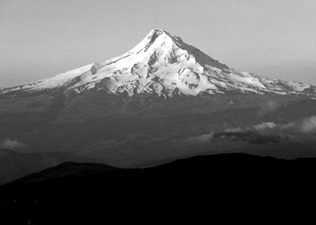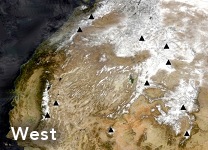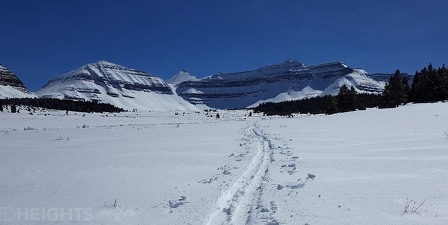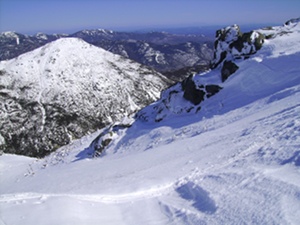After 44 miles plus more in side trips we’d completed the hardest state highpoint in the lower 48. A trip to Gannett Peak is a magical journey into the greatest wilderness left in the West and is a culmination of years experience.
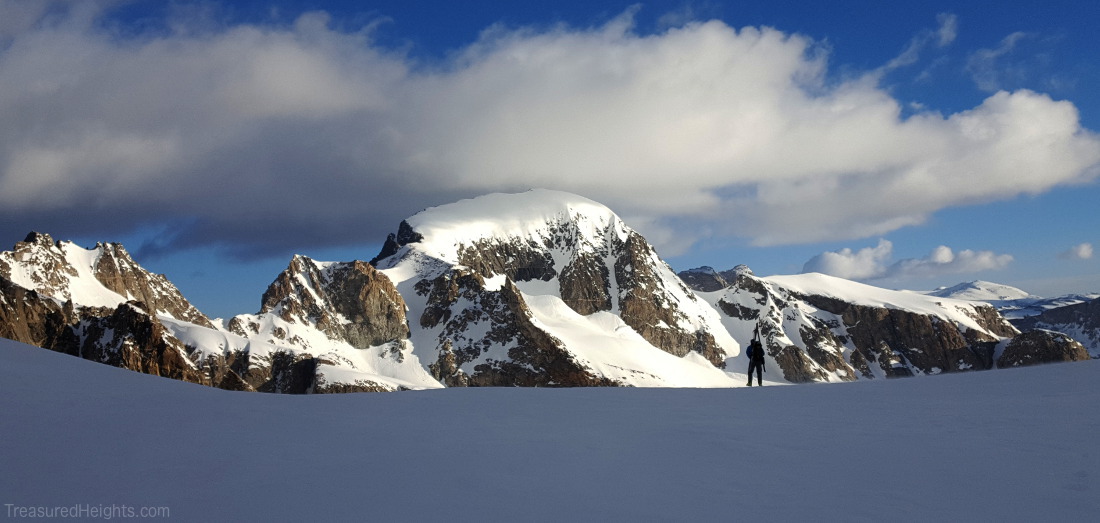
We all have had friends that visited Glacier National park, The Tetons, Colorado, Taos and other spots along the Rockies, but the “Winds” are not among that list of popular spots. Despite having the largest glaciers in the US Rocky Mountains and crooked fairy-tail spire peaks this range remains a blank spot on the map for most.
I started the list of high points to ski in 1998 and knew at some point I’d be headed into the remote Wind River Range. This year I’d trained for months, I wanted to crush this Gannett properly, not huff, puff and drag on slowly as on Rainier 4 years ago. After all, everyone said that Gannett is harder than Rainier.
The full documentary on this trip:
SKIING STATES: WYOMING – the YouTube video is below, click the lower right brackets to blow up to full screen.
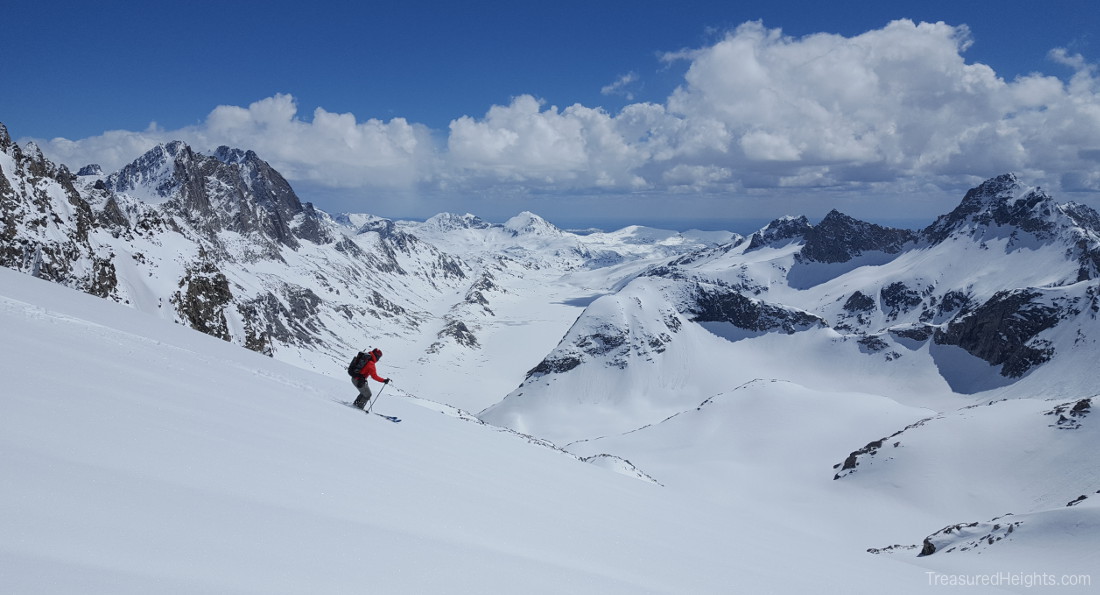
I assembled a crew of 3, with 2 hardy “Ice Coast” schussers from New Hampshire. Jeff Rogers and Alex Calder had already knocked off Denali and wanted to get into more Western peaks. Gannett’s solitude would provide a new dimension for them not found on busy Denali.
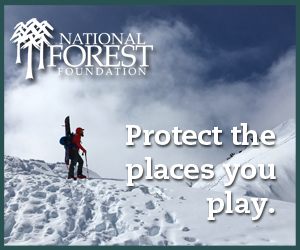 Gannett Peak vs. Mount Rainier – the challenge of state highpoints
Gannett Peak vs. Mount Rainier – the challenge of state highpoints
There is no single peak more “big” in the lower 48 than Rainier. It stands 10,000 vertical feet higher than the approach valleys and the cubic mass of this volcanic earth pimple could swallow up four Mt. Elbert’s or Mt. Whitneys (peaks that are technically higher above sea level). Gannett Peak is the opposite in some ways, it hides among other peaks deep in the folds of the range.
Rainier sees 5-6,000 climbers and skiers each year. Gannett sees a tiny fraction of that, especially in “winter” (October-June). Weeks go by in the winter when the mountain sees not a single party attempting it. Another thing about Gannett that makes it different than Rainier, Denali, Hood and others is that there are not hundreds of other climbers around you. In Gannett you will probably be completely alone and there is no help nearby in case of an emergency. There are no tools to repair your binding, or spare stove if your own party doesn’t carry it in.
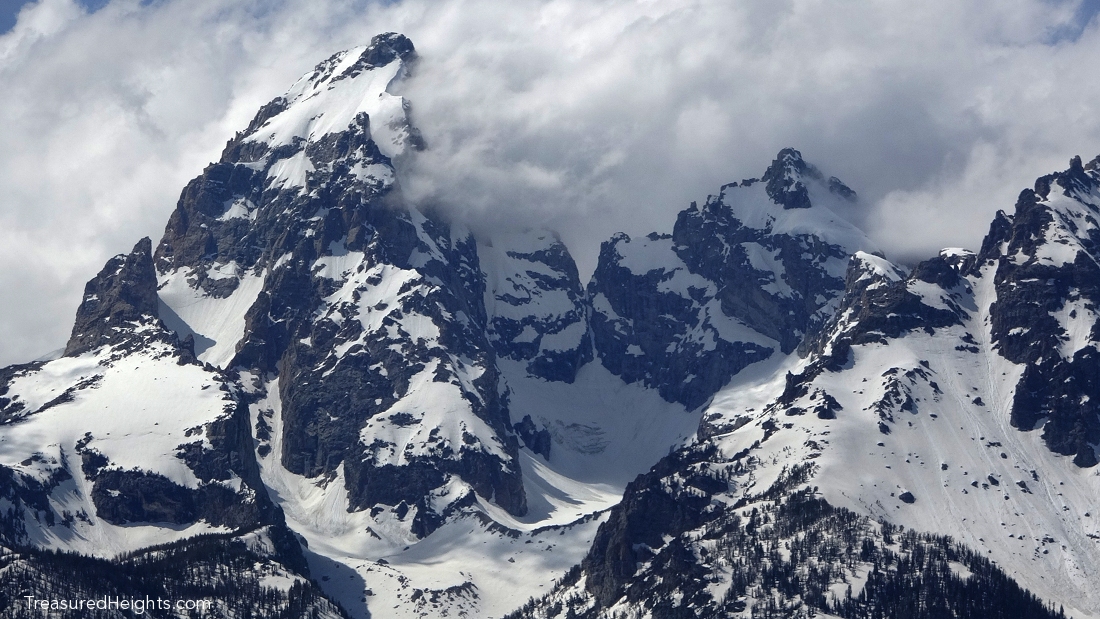
What keeps them alone:
In Wyoming the Winds are not well-known and the Tetons grab the spotlight. The Tetons are a unique range of 13ers which rise 7100’ vertical feet above the valley without any foothills to hide their glory. The Tetons have endless classic ski lines and “short” approaches (less than 8 miles is short in my book). The peaks get slammed with almost 5 million tourists annually. The Wind River Range in comparison gets about 900,000 visitors annually and almost all of those are in the summer.
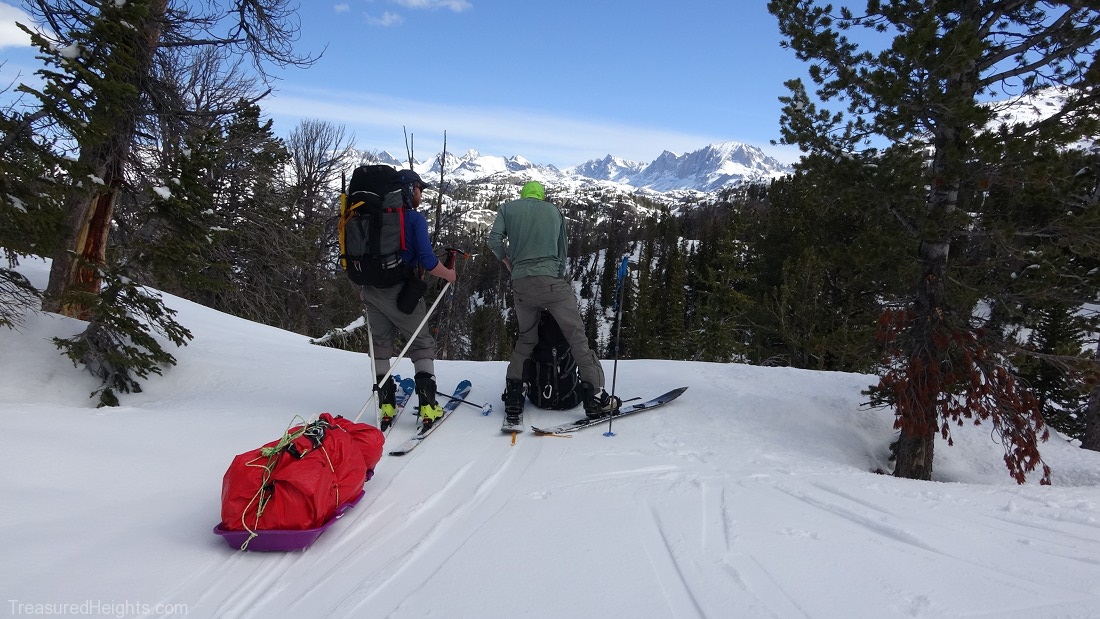
The lack of accessibility to the two major crests of the range (the focal point of visits) is excellent for keeping the crowds out in winter. In summer the place can get busy as pack animals enable summer backpackers to skip the work of carrying in their supplies.
“In the winter the number of skiers in the Winds is extremely limited and will always remain that way with the accessible candy-box of the Tetons nearby.”
Besides most of the large growth of backcountry skiers since 2010 has been among the more casual segment of skiers who don’t winter backpack (hut trips don’t count) and they want to maximize turns and powder without long approaches. A 16 mile approach before your first turns would not be an appealing prospect.
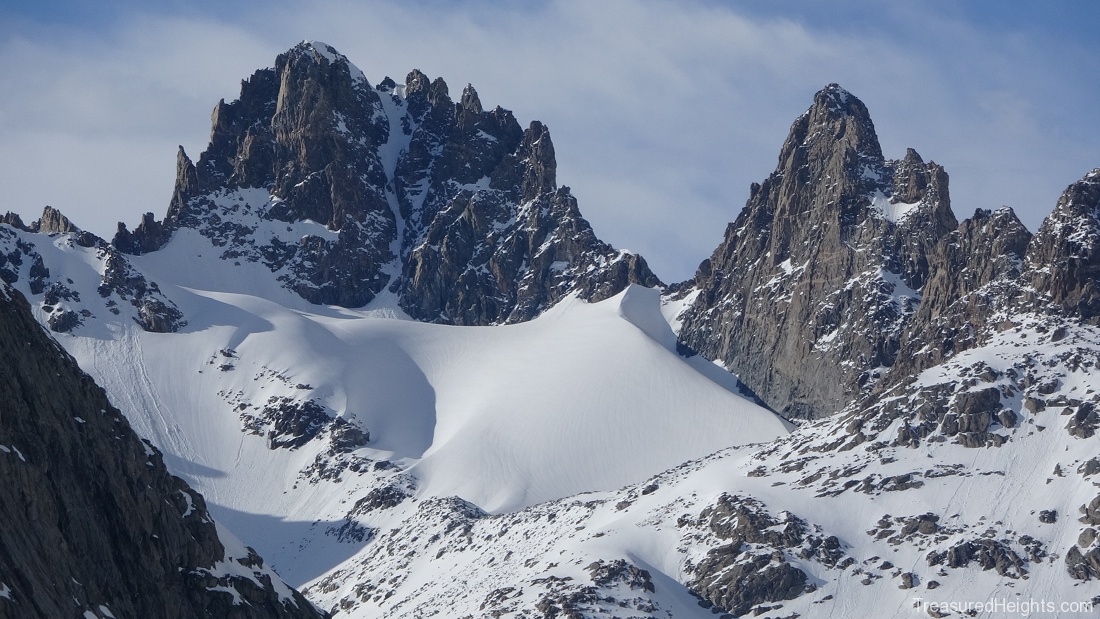
The Winds require the right skills
Ski expeditions into the Winds require a more well-rounded set of skills as a lot can go wrong. In “skimountaineering” (not “skimo” which is NOT skimountaineering, that is uphill racing in spandex) a variety of skills are needed. Everyone has strengths and weak points and a good team will round out the skill sets.
Navigation: this is absolutely critical for the Winds. The approach is not your typical day trip: up a drainage and down. Approaches here are a matrix of glacial carved small knobs, near-flat confusing forest and above treeline valley travel where whiteouts are common. The trail into Titcomb Basin is near useless.
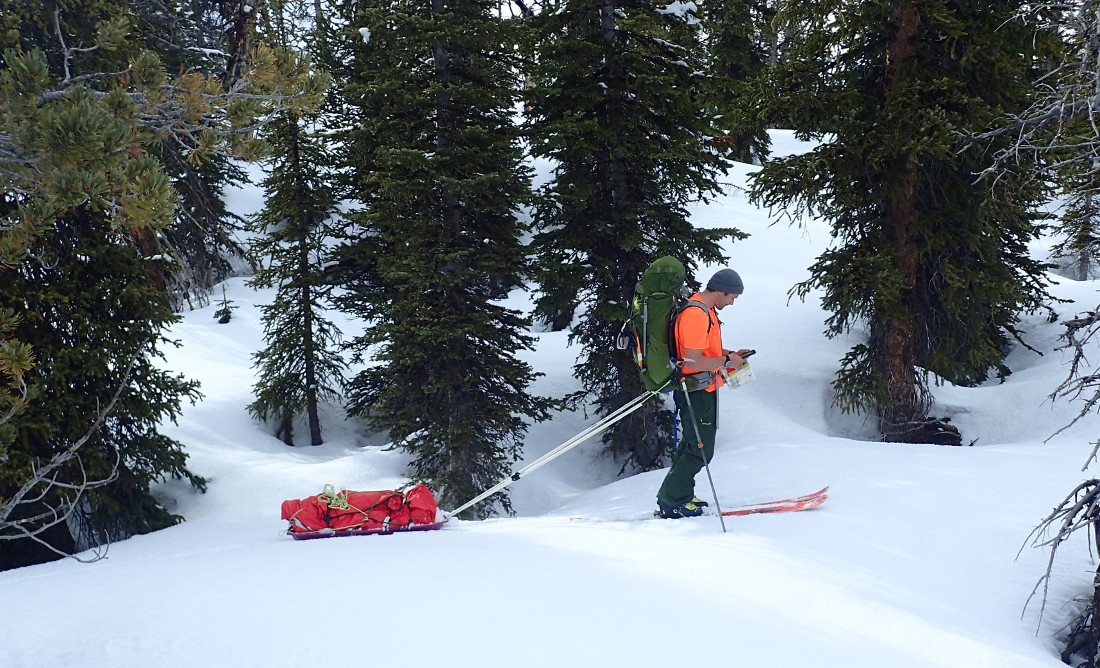
Unlike the East Coast where they nail plastic markers to trees, here the trees are unmarked and the natural distance between trees in the West makes it easy to lose the trail under 2-8’ of snow. Both battery-powered (GPS/phone) and non-electrical (maps) tools are required. Oh, and you’ll need brains in your group who actually know how to read maps and are not fully dependent on GPX tracks. Whiteouts are common here in afternoon storms so have a whiteout plan drafted ahead of the trip. More on whiteout travel >

Winter backpacking: This is a big subject, in summary you got to have your system down, this is not a place to test out lots of new gear and sleeping systems. Go on lots of trips where you have to set up camp more than 5 miles from the car to get familiar with your winter system. Each person’s system is unique. I like to use flip flops around camp in the snow in spring, others use down booties.
Try to keep your winter backpacking setup less than 40 lbs (not counting crampons, ice axe food, skis). Many can get their setup down to lower weights but remember for guys with wide frames we can carry larger weights easier and you need to consider your unique body shape and strength in planning. Wide shoulders and hips reduce performance in warm-climate rock climbing but give an advantage in mountaineering.
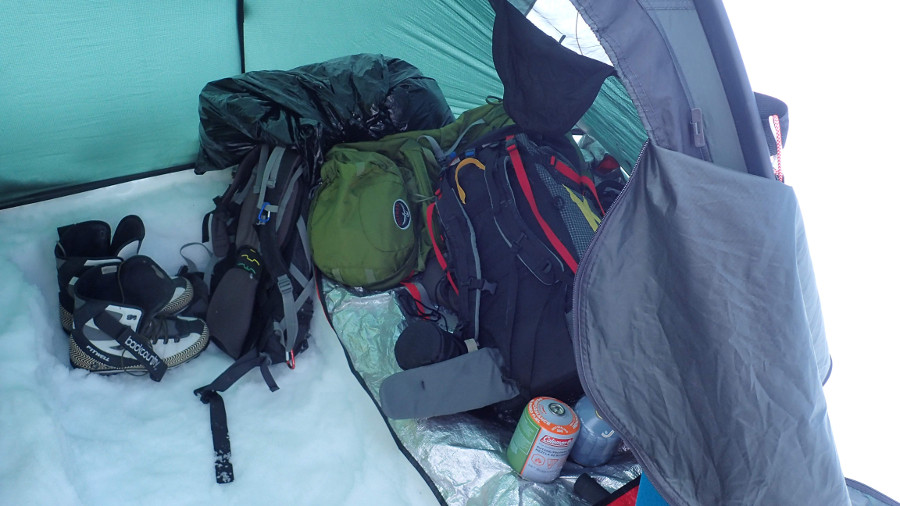
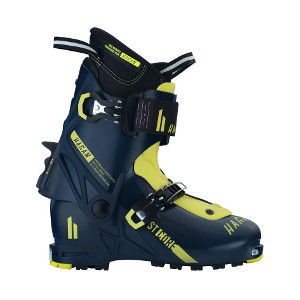
Sleds can take some of the weight off, and for smaller framed people they may actually prefer multiple individual sleds for the Winds since they can carry less weight on their back comfortably. Personally I would have preferred to not have any sled and have the 45 lb pack, but that was impossible because we needed at least 10 lbs of food each for this trip (5-6 days). Through some of the terrain we moved at only 1 mile an hour because of complicated steep microslopes in the forest. With no sled and a 45 lb load on the back we would have averaged at least 2 miles and hour being fit.
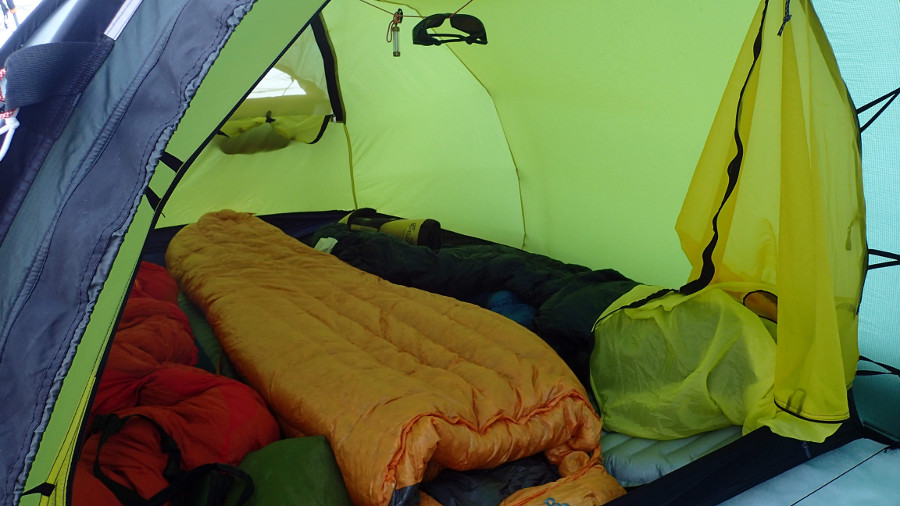
Avy savvy: have people on your team who are familiar with Rocky Mountain snowpack. The Winds do not have a detailed great forecast like Colorado, your team will be reliant on your own judgement and experience.
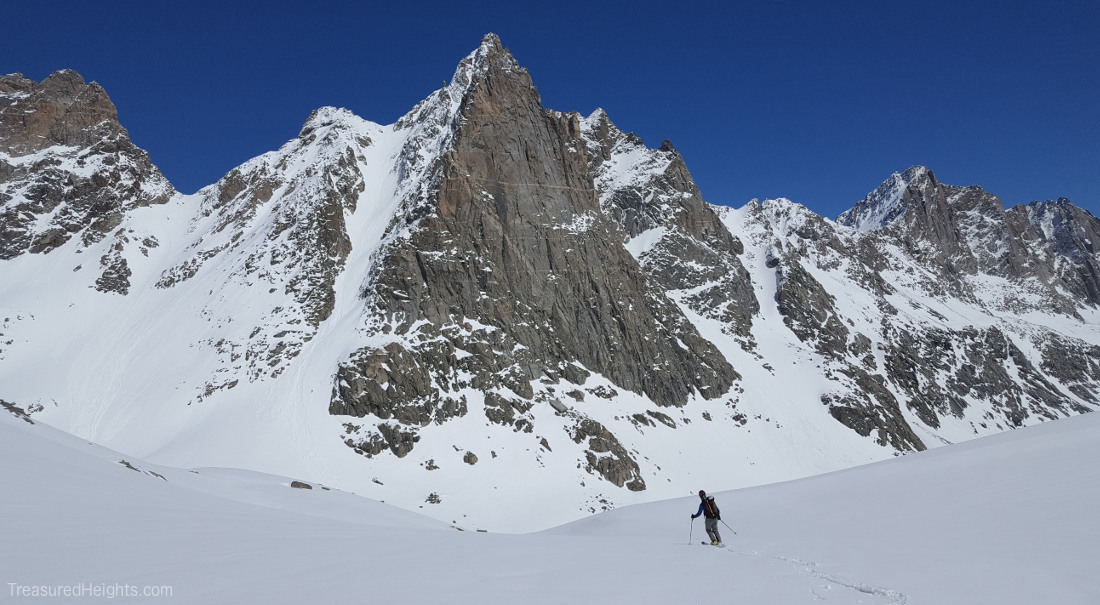
Steep skiing: while there are moderate lines around almost all the peaks require couloir skiing (40+ degrees) or with Gannett require skiing above giant cliffs. Be comfortable with steep skiing, have a few years experience doing it prior to an attempt.
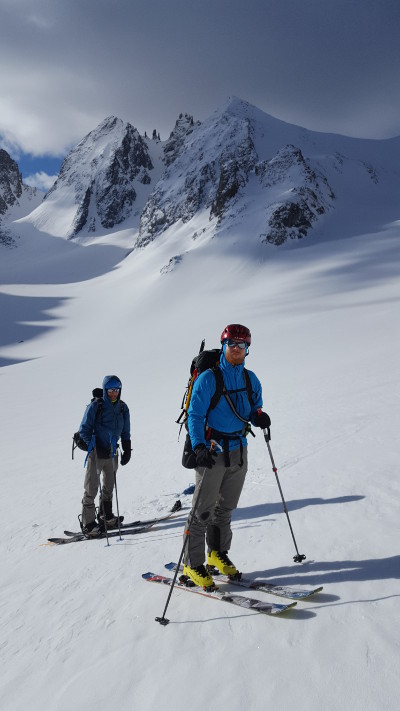
Rock, ice and snow climbing experience: This area is where a lot of skiers, even many good ones are weak. If you don’t rock climb or ice climb, you should. Spending dedicated days in the year just climbing will build a base of experience which translates to skimountaineering as handling sharp ridges and scrambles properly and with a relative level of comfort. Get some choss-sense by climbing on limestone and other less-than-classic climbing areas. Climbing above 5.9 is not necessary, but having a solid non-verbal understanding of the physics of rock and your own body weight on it is necessary.
Ski touring: a lot of people start skiing with cross country, however many don’t. Get used to doing long flat skis through the forest with little visual rewards. Doing 20+ mile days is a good endurance workout in preparation for the winds.
General fitness: pulling a back muscle, tweaking a knee and other small injuries in the Winds can lead to expensive rescues or killing the trip objectives for your friends at the very least. Spend months training for your trip with both strength building (uphill skinning and booting) and core and flexibility training (yoga, climbing). Only having strong ski legs and back won’t save you from injuries like IT band problems which is a result of having a weak core.
Glacier travel and skills: if you go early enough you won’t really need all the gear for this, but understand how to avoid potential crevasses by reading the surface of the glaciers. There are about 200 glaciers in the Wind River Range. Understand how to rescue a friend if they do fall in. Be fit and strong enough to rescue a friend. A lot of couloirs here end in a bergschrund, even if the rest of the glacier is filled in.
The right gear: Remember people have been skiing steep lines on these peaks since the 80s, and they didn’t have carbon fibre and $500 bibs. So you can piece together a setup that spends your funds on key items and avoids overpriced stuff that doesn’t give you dramatic weight savings. Don’t use worn-out old gear. A broken binding here could cost you big bucks for rescue as postholing out is not an option over these kind of distances.
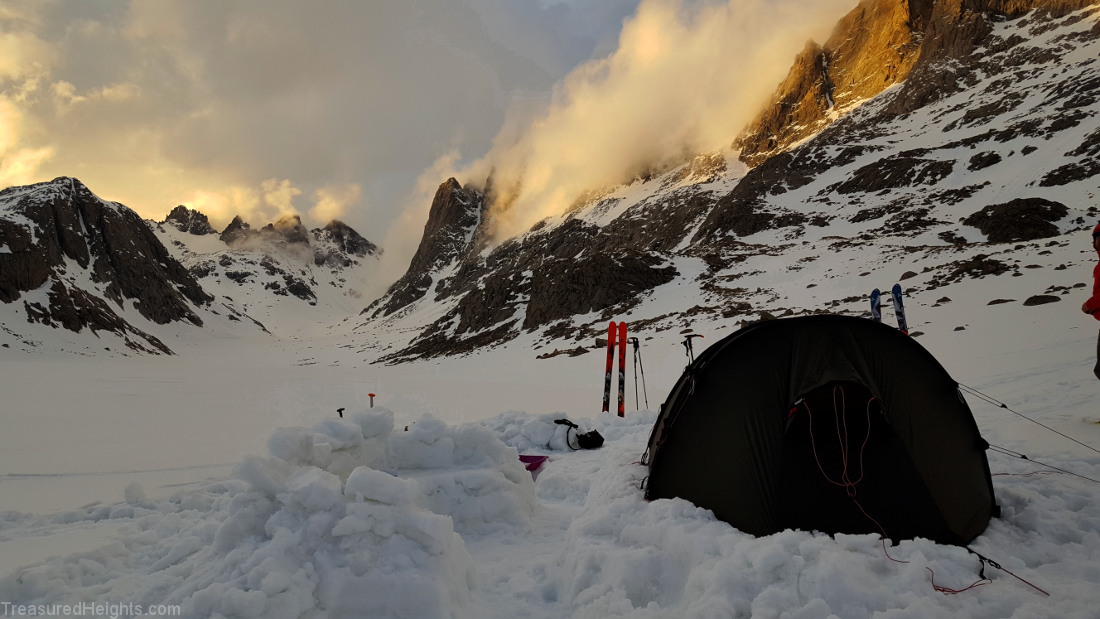
Guides are available for tours into the Winds and I recommend using a guide if you are not well-rounded enough in experience, they also have some awesome high-end gear to make your trip more comfortable.
Part II of this article is a trip report day by day on Gannett. Stay tuned for part II coming out soon.
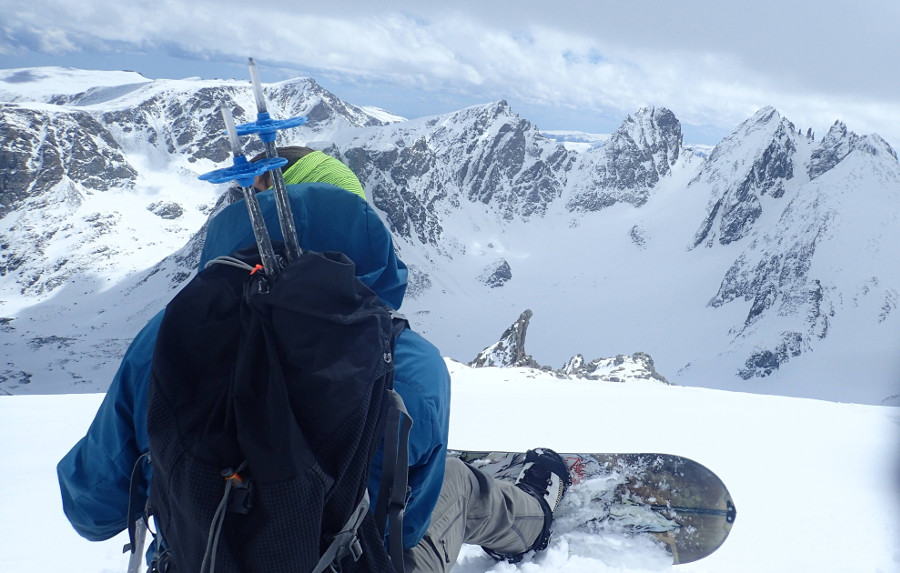
About the author:
Mike Whelan is the first person to have skied on almost all the snowy-state high points in the lower 48. Only Granite Peak Montana remains. He has ecapsulated the travels with the Skiing States Series – short edits and longer episodes highlighting the beauty of the states and at times interviews with local backcountry skiers who love their local mountains. Videos are set for release Dec. 2017 – June 2019 as they are edited.
Sources will be listed in part II of this article coming out soon.
See photos from Gannett and other highpoints on Instagram or Facebook.
Other high point articles from Skiing States:

